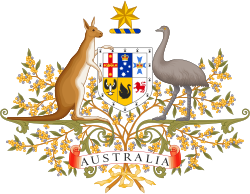Second Bruce Ministry
The Second Bruce Ministry (Nationalist–Country Coalition) was the 17th ministry of the Government of Australia. It was led by the country's 8th Prime Minister, Stanley Bruce. The Second Bruce Ministry succeeded the First Bruce Ministry, which dissolved on 18 December 1925 following the federal election that took place in November. The ministry was replaced by the Third Bruce Ministry on 29 November 1928 following the 1928 federal election.[1]
| Second Bruce Ministry | |
|---|---|
17th Ministry of Australia | |
| Date formed | 18 December 1925 |
| Date dissolved | 29 November 1928 |
| People and organisations | |
| Monarch | George V |
| Governor-General | Lord Stonehaven |
| Prime Minister | Stanley Bruce |
| No. of ministers | 15 |
| Member party | Nationalist–Country coalition |
| Status in legislature | Coalition majority government |
| Opposition party | Labor |
| Opposition leader | Matthew Charlton James Scullin |
| History | |
| Election(s) | 14 November 1925 |
| Outgoing election | 17 November 1928 |
| Legislature term(s) | 10th |
| Predecessor | First Bruce Ministry |
| Successor | Third Bruce Ministry |
Stanley Bruce, who died in 1967, was the last surviving member of the Second Bruce Ministry; Bruce was also the last surviving member of the Fifth Hughes Ministry and the First Bruce Ministry. Earle Page was the last surviving Country minister.
Ministry
| Party | Minister | Portrait | Portfolio |
|---|---|---|---|
| Nationalist | Rt Hon Stanley Bruce (CH) MC (1883–1967) |
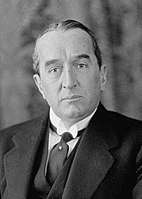 |
|
| Country | Hon Dr Earle Page (1880–1961) |
 |
|
| Nationalist | Rt Hon (Sir) George Pearce (KCVO) (1870–1952) Senator for Western Australia |
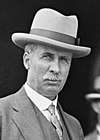 |
|
| Nationalist | Hon John Latham CMG KC (1877–1964) |
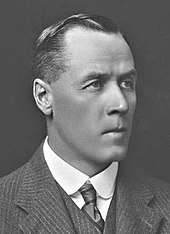 |
|
| Nationalist | Hon Herbert Pratten (1865–1928) |
.jpg) |
|
| Nationalist | Hon Sir Neville Howse VC KCB KCMG (1863–1930) |
.jpg) |
|
| Nationalist | Hon (Sir) Victor Wilson (KBE) (1877–1957) Senator for South Australia |
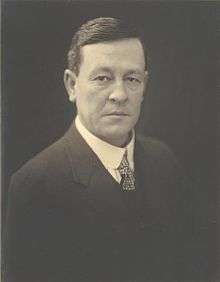 |
|
| Country | Hon William Gibson (1869–1955) MP for Corangamite |
.jpg) |
|
| Country | Hon William Hill (1866–1939) |
.jpg) |
|
| Country | Hon Llewellyn Atkinson (1867–1945) |
 |
|
| Nationalist | Hon Charles Marr DSO MC (1880–1960) |
.jpg) |
|
| Nationalist | Hon Thomas Crawford (1865–1948) Senator for Queensland |
| |
| Nationalist | Hon Sir William Glasgow KCB CMG DSO VD (1876–1955) Senator for Queensland |
.jpg) |
|
| Country | Hon Thomas Paterson (1882–1952) MP for Gippsland |
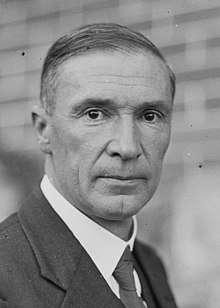 |
|
| Nationalist | Hon Alexander McLachlan (1872–1956) Senator for South Australia |
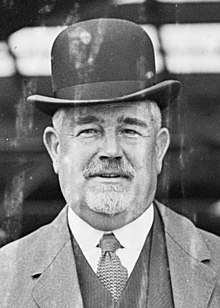 |
|
See also
Notes
- "Ministries and Cabinets". Parliamentary Handbook. Parliament of Australia. Retrieved 17 September 2010.
